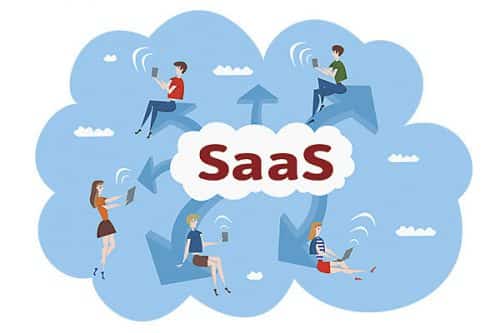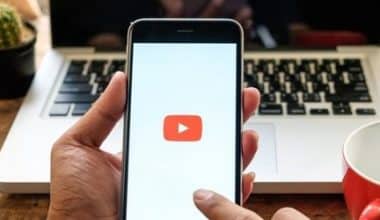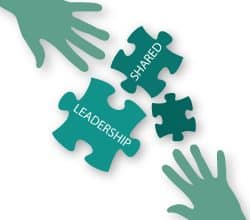Selling something that your consumers will never be able to hold in their hands necessitates a very unique technique and a lot of practice. Software-as-a-service (SaaS) refers to any cloud software product that a corporation hosts and makes available to consumers via the Internet rather. The SaaS business has various selling tactics, metrics, and sales process cycles.
Whether you’re new to the SaaS sales game or just want to enhance your sales skills in the ever-changing software industry, this comprehensive guide will lead you through everything you need to know about slinging SaaS.
What is SaaS Sales?
The process of selling software that clients access through an online portal or website and use to solve a business problem is known as SaaS sales. The end goal of any B2B sales is to make your clients more successful. It might mean saving them time, money, or boosting their capacity to produce revenue.
Because SaaS products are often more difficult to use than physical products, prospects require a lot more education and training from sales professionals before they feel ready to buy.
Another distinguishing feature of SaaS sales is that the product typically has a subscription-based pricing plan. Clients effectively become repeat customers each month, quarter, or year. This generates consistent revenue for the SaaS company, but it also implies that the prospect’s investment is rather large. A SaaS customer can spend tens of thousands of dollars on their software subscription over the course of a few years.
Because of the high stakes involved in SaaS sales, sales representatives should be prepared to incorporate numerous decision-makers from a target firm in their sales process and provide a high-touch, tailored customer experience.
Another consideration when selling a SaaS product is that SaaS packages are very configurable in terms of features. This might lengthen the sales cycle as buyers haggle the features they require for their firm.
How Long Does a SaaS Sales Cycle Last?
Knowing the length of your sales cycle aids in the creation of realistic revenue estimates. This is very critical to the health of any SaaS company. Several factors influence whether your product sells in two weeks or six months.
#1. Customer Type
Because there are fewer decision-makers involved, small enterprises or solitary entrepreneurs often require less time before making a purchase choice. Meanwhile, commercial customers have extremely formal systems in place for assessing and authorizing purchases. This frequently involves many procedures and decision-makers.
#2. Product Price
As the price of the product rises, so does the length of the SaaS sales cycle. According to sales specialist Matt Bertuzzi, items with an annual contract value (ACV) of $5,000 or less can take a little more than a month to close. Items with an ACV of $100,000 or more can take closer to six months.
Jason Lemkin, the founder of SaaStr, has set a similar goal for B2B SaaS sales cycles:
- Deals with an ACV of $2,000 should close in 14 days on average.
- Deals with an ACV of $5,000 should close in 30 days on average.
- Some deals with an ACV of $25,000 should close in 90 days on average.
- Deals with an ACV of $100,000 should conclude in 90–180 days on average. This depends on the number of stakeholders and gates.
Given that more expensive items frequently necessitate buy-in from various decision-makers within a firm, extensive budget preparation, and a series of demos or meetings to illustrate the product’s worth. It’s no surprise that they have a lengthier sales cycle.
#3. Product Complexity
The more customization possibilities you provide with your product, the more demos or assistance your leads are likely to require before making a purchase decision. As previously noted, customization options for SaaS solutions inevitably result in back-and-forth negotiating periods. That can consume a significant amount of time.
#4. Trial Offers
If you provide a free trial of your product, the length of the trial will naturally add time to your sales cycle, since clients will not normally purchase before the free period expires. That is not to say you should not give trials. However, be conscious of their length, consider it when calculating your saas sales cycle time. Also, ensure your salespeople are checking in with prospects throughout their trial, not just at the end.
Short free trial periods accomplish two goals: they shorten your sales cycle and encourage users to act promptly. Users who begin a trial with a 7-day or 14-day time restriction are more likely to test the program right away. However, users who begin a 30-day trial may become complacent and delay testing until the trial is complete.
As we have seen the factors that can affect a sales cycle, let’s see the important saas sales metrics to look out for.
Some Important SaaS Sales Metrics
There are lots of metrics for measuring SaaS sales. However, the ones listed here are possibly the most essential for you.
#1. Annual Recurring Revenue (ARR) and Monthly Recurring Revenue (MRR)
Monthly recurring revenue (MRR) is the amount of money your company anticipates to make each month based on the value of your current customers’ subscriptions.
MRR keeps the lights on, therefore you should always know how much money you’re bringing in. Fortunately, MRR is a rather straightforward calculation. Simply total the monthly fees paid by each customer.
Annual recurring revenue (ARR) is a measure of how much revenue your organization would generate in a year based on your present subscription value. It is essentially MRR multiplied by 12. We consider new MRR, the number of new customers, the number of customers who are still with us after 90 days, as well as their MRR
During the first 90 days, we also look at a number of feature-usage indicators that suggest consumer acceptance.
#2. Cost of Acquiring a customer (CAC)
The average cost of signing up a new user is referred to as the customer acquisition cost (CAC). Your advertising budget, as well as the efforts of your sales and marketing staff, all have an effect on your CAC.
Simply divide the total cost of your sales and marketing expenses by the number of clients acquired during the same time period to get your CAC.
#3. Customer Lifetime Value (LTV)
Customer lifetime value (LTV) is the amount of money generated by an average customer over the course of their relationship with you. As long as your LTV exceeds your CAC, you have the makings of a successful firm. This is why it is critical to understand both.
Multiply the customer value (the average purchase value multiplied by the average buy frequency rate) by the average customer lifespan to calculate the LTV.
While this may appear to be a simple calculation, you must first compute a few averages before arriving at the CLV.
#4. Churn Rate
Nobody likes to lose a customer, but it does happen, hence you need to take this saas sales metric very important. Your churn rate is the percentage of customers who leave each month or year. Then you can compare them to industry benchmarks to determine your company’s overall health.
Divide the number of customers who depart during a particular period by the total number of customers during the same period to get the churn rate, then multiply by 100 to get the percentage.
If you’re really lucky, your company can achieve negative churn. This means that the increased money from existing customers expanding their subscriptions consistently outweighs the income lost from consumers canceling their subscriptions.
#5. Volume and Type of Activity
SaaS salespeople utilize a wide range of online and offline communication tactics to nurture prospects, so it’s critical to collect data on which actions are most effective.
#6. Win Rate
The win rate demonstrates how your sales teams or salespeople are performing. It is essentially the proportion of total leads closed by your sales staff over a certain time period. Once you know your win rate, you can calculate how many leads you need in your pipeline at any given time to reach your objectives. You may also determine which sales reps could benefit from further coaching and training in order to boost their win rate and reach their quotas.
#7. The Deal Velocity
The average time it takes for a lead to go through your pipeline is referred to as deal velocity. “The statistic I focus on personally is transaction velocity, because it assures that I am consistently bringing in deals and moving on to the next,” says Evan Cassidy. Larger transactions can require a lot of effort, so I want to make sure I’m not focusing too much time on one item at a time, but rather moving them every day and every week when possible.
#8. Data from the Market
While studying your sales reps’ activity levels and individual win rates can help you optimize your process, it’s also important to study customer and market attributes such as which industries have the most need for your product, where you do well geographically, the sizes of your prospects’ companies, and whether they’re public or private.
With the knowledge of these important metrics, let’s see the different stages in the saas sales process.
The Stages of the SaaS Sales Process
A typical saas sales process can be divided into the pipeline stages listed below:
While those stages might easily be used in a SaaS scenario, there are some significant distinctions in what those stages include and the tasks they contain.
#1. The Process of Prospecting
Inbound marketing is a very successful technique to collect SaaS leads because you’re selling to a tech-savvy audience that is always searching for information online. There are various techniques to get on the radar of your potential client, including:
- Ads on the internet
- Blog entries
- eBooks and whitepapers
- Newsletters are published regularly.
- Social Media
Trade events and conferences are other places to locate SaaS prospects. These events provide you with the opportunity to meet face-to-face with potential buyers, which is a rare occurrence in the SaaS sector, as practically all prospect engagement is done remotely via email, phone, and video-conferencing.
#2. Qualification
Not all blog visitors or trial subscribers are worth pursuing. You must have a system for qualifying leads so that sales representatives can follow up with the top prospects.
Lead scoring is a method of automatically qualifying leads. LeadBoxer, for example, collects and evaluates data about your website visitors before assigning them a score from 0 to 100 indicating their potential of closing.
A more hands-on approach to qualifying leads is to have one of your sales development people contact them through phone or email shortly after they begin a trial of your program. Simple five-minute phone contact is often all that is required to assess whether the prospect is interested and should be pushed on to the next level.
#3. Introducing
A well-crafted email sequence with plenty of follow-up chances can be the lifeblood of your SaaS sales process. The goal is to get eligible prospects to meet with you one-on-one so you can learn more about their problems and showcase the value of your products.
However, as previously said, face-to-face contact is uncommon in SaaS sales, necessitating the use of a new set of abilities.
#4. Object Management
Prospects are likely to have questions or reservations following presentations, which might possibly derail the sale if not addressed gracefully. According to Steli Efti, CEO of Close, two of the most typical objections in SaaS sales are “Your product is too expensive” and “Your product does not have the proper features,” and both need you to do a better job proving the value of your product:
#5. Closing
This is the point at which the prospect turns into a customer. At this point, you will deliver the final proposal, conduct any necessary discussions, and have everyone sign on the dotted line.
We can provide one piece of advice based on our own experience: don’t rely on discounts to persuade obstinate prospects. While discounts may encourage a consumer to select you over your competitors, they will eventually eat into your revenues and set you up for failure. Customers that seek discounts are typically the most difficult to work with. This is due to the fact that people who are obsessed with pricing are also the most vocal complainers. However, lowering your prices to close a sale with this type of customer means sacrificing quality.”
Giving out a free month in exchange for annual prepayment is a better method to offer a discount.
#6. Retention
Customer retention is critical for a SaaS company. Consider the following, in addition to providing outstanding customer service for all of their post-sale needs:
- Training for new users on current accounts is provided regularly.
- Looking for opportunities to upsell existing clients, such as recommending a more feature-rich product tier when it will meet their needs.
- Requesting feedback, reviews, and referrals, as well as offering to promote your consumers in testimonials
- Sending handwritten thank-you notes to consumers who mark an anniversary with your company; in a tech age, human touches truly help you stand out.
What are the best practices for SaaS sales prospecting?
The best practices for SaaS sales prospecting include researching target accounts, personalizing outreach, and leveraging data and technology to increase efficiency and effectiveness.
How do you create a SaaS sales deck?
A SaaS sales deck is a visual presentation used to pitch a product to potential customers. It should include an overview of the product, its value proposition, and key features and benefits.
How do you negotiate SaaS sales deals?
Negotiating SaaS sales deals involves understanding the customer’s needs and goals, as well as having a clear understanding of the product’s value proposition and competitive positioning.
How do you close SaaS sales deals?
Closing SaaS sales deals requires building rapport and trust with the customer, effectively communicating the product’s value, and addressing any objections or concerns the customer may have.
What is the role of technology in SaaS sales?
Technology plays a crucial role in SaaS sales by enabling sales teams to efficiently manage customer relationships, track and analyze data, and automate various sales processes.
How do you scale SaaS sales?
Scaling SaaS sales involves optimizing processes, expanding the customer base, and increasing the average deal size.
In conclusion
The sales process of your SaaS product is critical to a founder’s and his or her startup’s success.
If you can handle the saas sales metrics,, you will be in charge of the majority of business development. Of course, sales talents do not substitute for high-quality development or lower client expectations.
However, it is critical to understand what SaaS sales metrics are. By gaining control of the SaaS sales cycle, you can create the next Dropbox. Are you interested?
Saas Sales FAQS
How much do SaaS sales reps make?
What is the average SaaS sales rep’s salary? The average base salary for a SaaS salesperson is $68,705 based on data from ZipRecruiter, Glassdoor, and the Bridge Group. The commission is usually added to the base pay and awarded when a salesperson meets or exceeds the quota
What does SaaS stand for?
Software as a service (or SaaS) is a way of delivering applications over the Internet—as a service. Instead of installing and maintaining software, you simply access it via the Internet, freeing yourself from complex software and hardware management.
Is it hard to get into SaaS sales?
SaaS companies are usually on a high-growth trajectory. Therefore, they need the best salespeople possible. It doesn’t matter if you don’t have experience in SaaS sales, as long as you’ve had some sales experience. When looking for work in SaaS, you could potentially work for companies all over the world.
Why have a career in SaaS?
SaaS frees employees from being bound to the office and allows them to work wherever they are and at any time. This freedom allows for high employee productivity – as all they need is the internet to get their work done!







2 comments
Great article! I use a software called cucomm. It’s suitable for Facebook and automatically sends messages to users. It can also add them to friends. It’s simple, convenient, and safe.
Thanks! I use Facebook and software like cucomm. The program automatically sends messages to users and can add them to friends. The most important thing is that you don’t need to enter your account password. It’s simple, convenient, and safe.